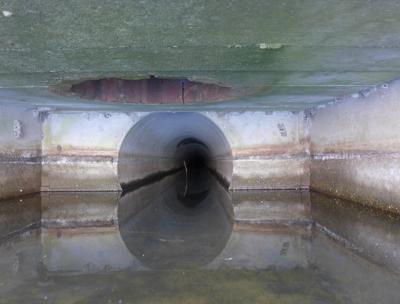On Runoff and a 1935 Pipe

Drew Bennett, an environmental consultant to the village, told the East Hampton Village Board at its work session last Thursday that the 7,700-foot-long concrete drainage pipe that runs from Route 114 to Georgica Pond, constructed in 1935, is still functional, but an assessment is underway to develop options and a plan to further mitigate stormwater runoff that flows into and through it to the pond.
Georgica Pond has experienced toxic algal blooms in each of the last several summers, and public and private groups have taken several actions to improve its water quality.
Land use was primarily agricultural when the pipe was installed, Mr. Bennett said, and its purpose was mainly flood relief. “The landscape has changed dramatically,” he said, calling the area medium-density residential today. “We’re looking at opportunities to try to divert the water and also maintain a certain level of flood protection.”
Two critical areas that should be addressed are the rest area on Montauk Highway and the area around the PSEG Long Island substation near Buell Lane Extension and Cove Hollow Road. The board has been proactive over the years, Mr. Bennett said, moving to install dry wells and drainage inlet filters. “Nevertheless, there’s still water flowing out of the end of the pipe. We’re looking at opportunities to try to improve that.”
Actions to further filter pollutants and reduce stormwater flow into the pond could be financed with the community preservation fund, a portion of which can be allocated to water quality improvement, Mr. Bennett said. “We’ve identified some things early on that could be done short term. The town could install inlet filters on their drains” north of Montauk Highway, he said. Runoff going into the pipe at 20 locations could be diverted into a series of dry wells, “and we thought it might be good to experiment on one or two locations to see how that works,” given the pipe’s age and surrounding underground utility infrastructure.
“Stretch it out over time and do things as funding allows and in a prioritized fashion,” he suggested.
Rebecca Hansen, the village administrator, said that the committee appointed to oversee community preservation fund water quality projects has been briefed on the drainage pipe assessment. “They seem receptive and initially supportive of some of the things the village could be recommending,” she said.
She has also met with State Department of Transportation officials at the rest area site. “They’re in the loop, and said they would appreciate being kept in the loop, especially if anything would happen at the rest area,” she said.
